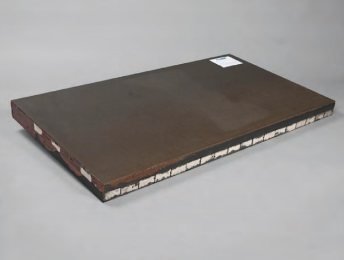Chapter: Hypersonics and Space Technologies, new invention technology, Research project papers,
Structurally Integrated Thermal Protection System (SITPS)

Structurally Integrated Thermal Protection System (SITPS)
An Armstrong research team has combined high-temperature
insulative and advanced composite materials in a unique design to protect
aerospace vehicles from both the high aerodynamic loads as well as high
temperatures generated by reentry from space. This dual-purpose sandwich panel
design carries both thermal and mechanical loads and increases the operational
efficiency of hypersonic vehicle aeroshells. Conventional multi-use hypersonic
vehicles typically use non-load-bearing insulation systems to thermally protect
the vehicle while using an internal skeleton to bear the mechanical loads. The
Armstrong-developed SITPS offers a combined advanced thermal protection system
that is both structurally and volumetrically efficient. It uses
high-temperature, ceramic-matrix composite and lightweight insulation
materials. Incorporating the insulation within a more robust sandwich panel
could significantly reduce the operational costs for preparing a vehicle for
its next mission.
Work to date: The team developed the
materials and process to fabricate a 20x36-inch concept panel for a
specific core design and mechanically tested it in a laboratory using three
separate methods. The team also has developed a material database of SITPS
strength
and thermal
performance characteristics. In addition, the team examined alternate sandwich
core designs to increase the overall thermal and mechanical performance of the
concept panels.
Looking ahead: Next steps involve
developing panel closeouts and panel-to-panel joints in addition to
manufacturing curved SITPS panels.
NASA partners: Langley Research Center and Glenn Research
Center
Benefits
Robust: Increases durability
of the TPS, thereby decreasing maintenance time
Strong: Offers higher structural efficiency
Efficient: Permits
the reduction of vehicle mass with its combination of thermal and
load-bearing capabilities
Applications
Multi-use hypersonic vehicles
Aircraft exhaust-washed structures
Hypersonics and Space Technologies
Akey objective of hypersonic research at NASA is to develop
methods and tools that adequately model fundamental physics and allow credible
physics-based optimization for future operational hypersonic vehicle systems.
Research focuses on solving some of the most difficult challenges in hypersonic
flight, and Armstrong innovators are contributing to this research in several
ways:
- Exploring adaptive guidance systems
that could detect conditions likely to result in dangerous situations and
automate compensating maneuvers
- Modeling high-altitude environments to
improve flight planning designs for high-speed vehicles
- Designing high-temperature insulative
and advanced composite materials
This research will enable the development of highly reliable and
efficient hypersonic systems.
Related Topics